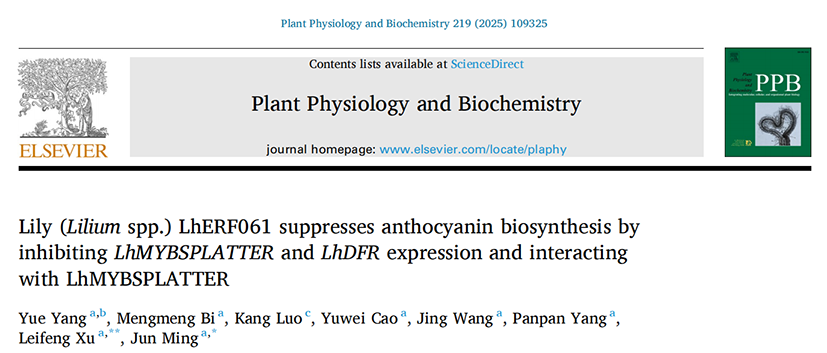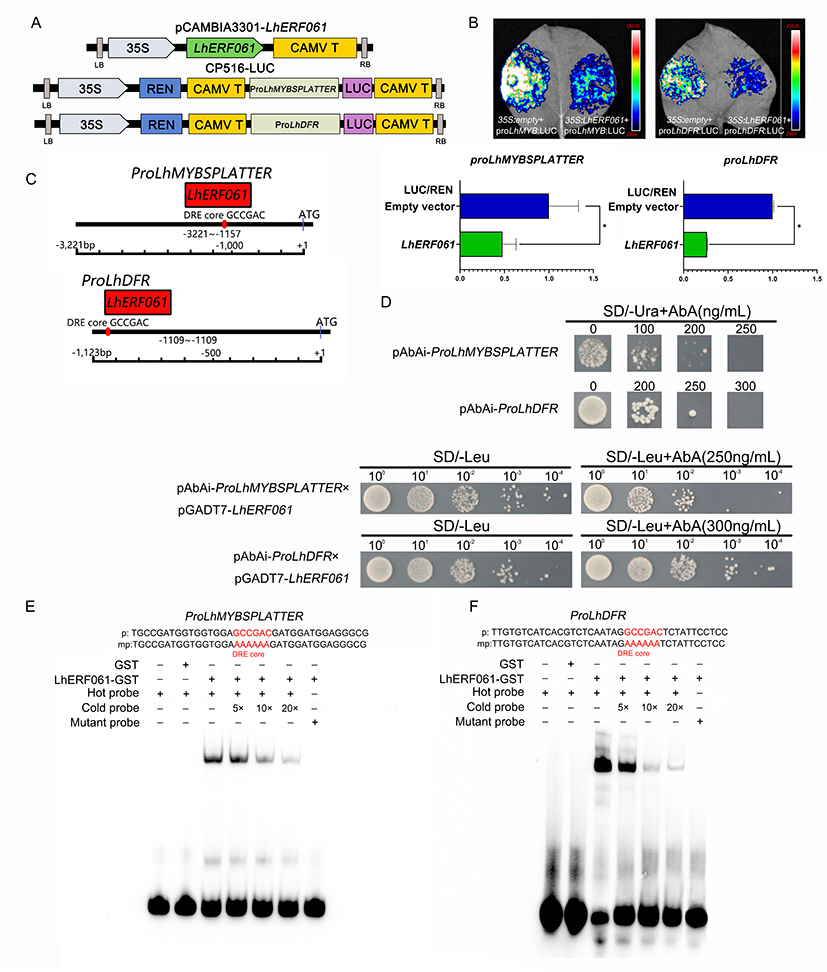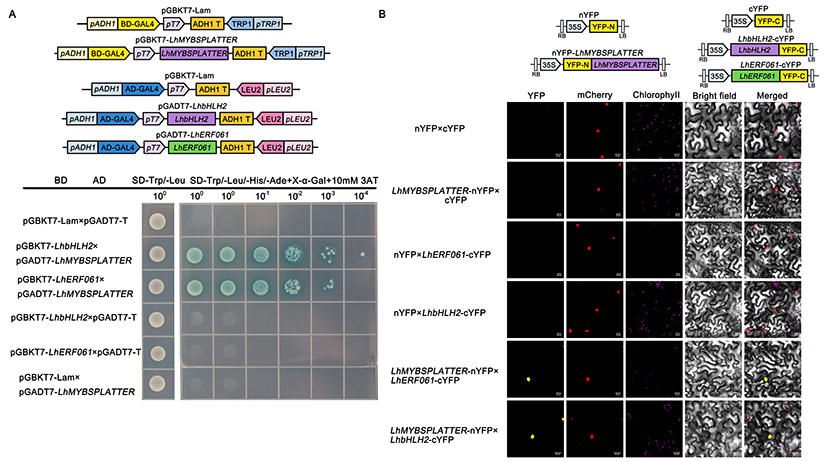Recently, the lily group of the Institute of Vegetables and Flowers published a paper entitled "Lily (Lilium spp.) LhERF061 suppresses anthocyanin biosynthesis by inhibiting LhMYBSPLATTER and LhDFR expression and interacting with LhMYBSPLATTER" in Plant Physiology and Biochemistry (IF: 6.1).

Lilies (Lilium spp.) are world-famous bulbous flowers with high economic, ornamental, and edible value. Anthocyanins are important secondary metabolites in plants, providing nutrient tissues and organs with rich colors and protecting plants from environmental stress. The specific accumulation of anthocyanins in space and time leads to the different pigment patterns in Asian hybrid lily Tango series, but the exact coloring mechanism is unclear. Revealing the regulatory mechanism of anthocyanin synthesis in lilies has important theoretical significance and practical application value for flower color improvement.
Previous studies have found that LhMYBSPLATTER is an important positive regulatory factor for the formation of bicolor flowers in the Tango series of lilies. Furthermore, the transcription factor LhERF061 was screened out by screening yeast one-hybrid library. Expression analysis showed that the expression trend of LhERF061 was negatively correlated with the trend of anthocyanin accumulation. It was confirmed that LhERF061 negatively regulated the accumulation of anthocyanins in the experiments of transient overexpression and silencing in the tepals of the lily 'Tiny Padhye', which was further validated in stable heterologous transformed Arabidopsis and tobacco. It was found that LhERF061 directly binds to the promoters of LhMYBSPLATTER and LhDFR and inhibited their expression through dual-luciferase assays, yeast one-hybrid assays and EMSA, thereby inhibiting the accumulation of anthocyanins. In addition, this study further discovered that LhERF061 competitively binded to the LhMYBSPLATTER protein, affecting the positive regulatory role of the MBW complex, and inhibiting the biosynthesis of lily anthocyanins through multiple pathways.


The Institute of Vegetables and Flowers of the Chinese Academy of Agricultural Sciences is the first unit to complete the paper. A PhD graduate student Yue Yang is the first author of the paper. Prof. Jun Ming and Prof. Leifeng Xu of the Institute of Vegetables and Flowers are corresponding authors of the paper. This work was supported by the National Natural Science Foundation of China, the Programs for National Key R & D Plan.
Original link: https://www.sciencedirect.com/science/article/pii/S0981942824009938
Source: Innovation Team for Floriculture Genetic Resources and Breeding